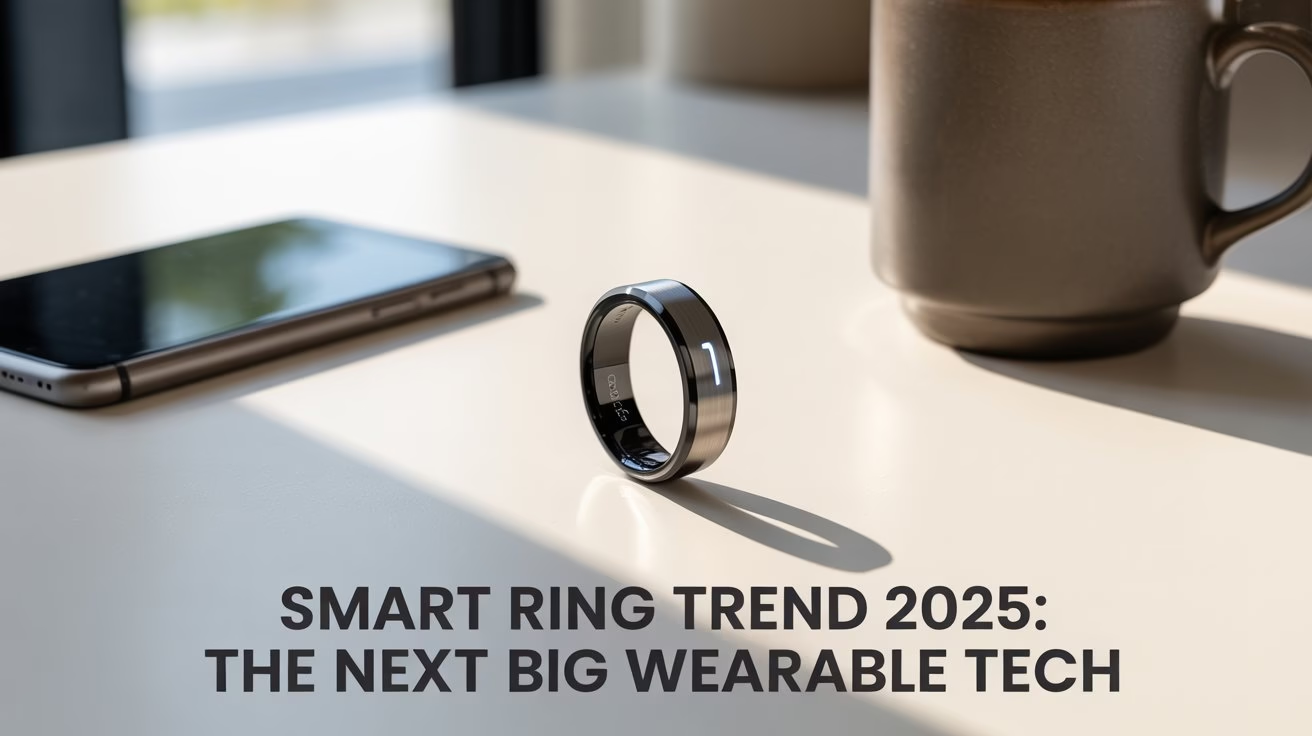Tiny, capable, and surprisingly stylish, the smart ring trend 2025 is reshaping how we track wellness and stay connected. Think of a sleek band that reads your signals, nudges you about important alerts, and even pays for coffee, all without stealing attention.
According to a recent Grand View Research report, demand for these compact wearables is increasing rapidly as users shift toward smaller, more personal technology that seamlessly integrates into daily life.
What This Finger-Worn Device Actually Does
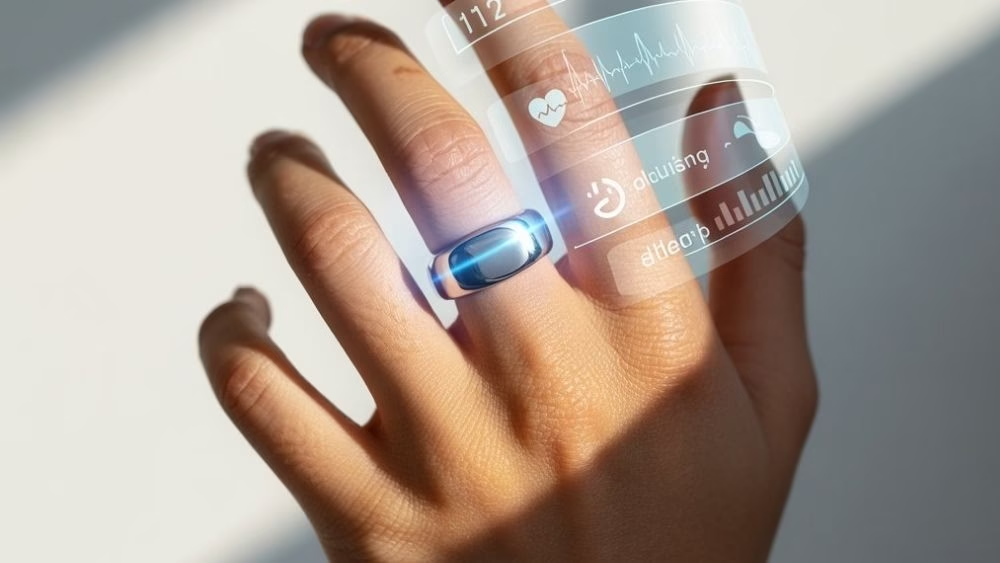
A ring-based wearable looks like jewelry yet behaves like a health companion. It records key metrics, syncs with your phone, and supports subtle alerts so your day keeps moving.
- It captures sleep, heart rate, and temperature trends with impressive consistency. The finger is close to the arteries, which helps many models improve accuracy. Paired apps turn numeric data into clear daily insights.
- It supports discreet cues for calls and messages. A gentle vibration gets your attention without lighting up a room. That makes meetings and workouts less interruptive.
- It integrates with health and fitness apps you already use. Data flows into familiar dashboards. That means less juggling and more clarity.
- It prioritizes comfort for 24/7 wear. Lightweight materials make overnight use realistic. That matters for reliable sleep analysis.
For model comparisons and current leaders, TechRadar’s roundup offers a helpful snapshot.
Why People Are Suddenly Interested
Overall, this compact gadget delivers the benefits many wanted from wearables, only with less bulk and fewer distractions.
- It looks like a minimal accessory. You gain function without flashy screens. Style never has to take a back seat to features.
- It encourages consistent use. Comfort leads to more complete data. Complete data leads to better decisions.
- It complements a smartwatch instead of competing with it. The ring handles passive metrics and subtle alerts. The watch can remain a visual tool when you need it.
- It fits the broader move to quieter technology. Less screen time, more signal. That balance feels modern and sustainable.
LiveMint’s guide even calls these “invisible wearables,” and that label suits them.
Health Tracking, Minus the Fuss
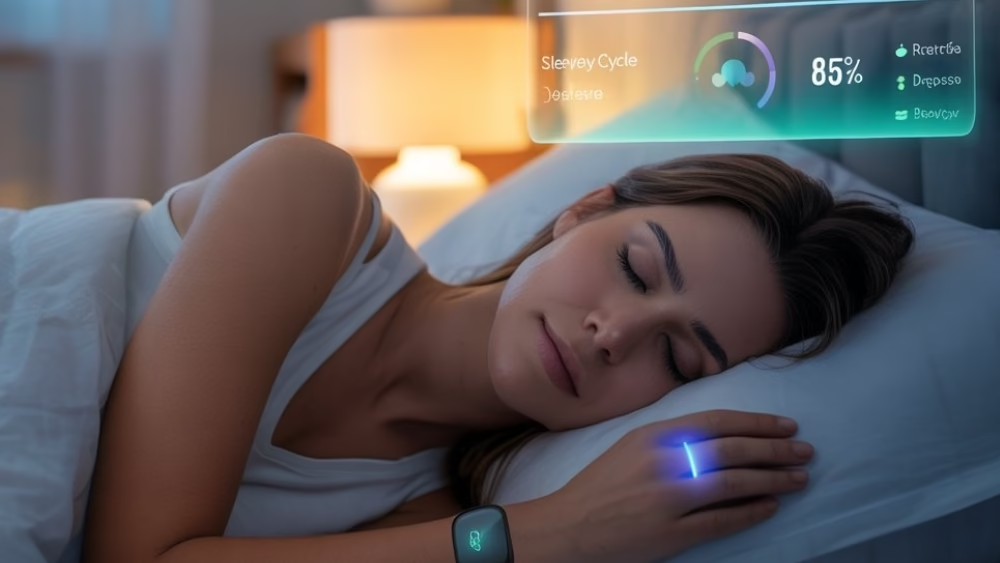
Above all, wellness is the headline feature. Modern smart ring health tracking goes beyond steps to show recovery, sleep stages, and stress patterns.
- Sleep profiles are deeper than you might expect. Stages and duration build a fuller picture of recovery. As a result, quiet energy scores help plan training or rest days.
- Heart metrics update continuously. Heart rate and HRV trends provide early signals about strain or stress. Over time, those patterns become actionable, and therefore, they help you adjust training and rest with more confidence.
- Temperature and readiness indicators add context. Small changes matter when you’re traveling or training. Context turns raw data into a plan.
- Data is easy to read. Most apps summarize the highlights for quick decisions. Details remain available for deeper dives.
If you enjoy wellness content, check out the Best Fitbit Watch for Women 2025 review. It offers a clear look at wrist-based trackers and how they compare in everyday performance.
Price, Cost, and Typical Smart Ring Pricing 2025

Next, let’s talk numbers, because everyone does. Smart ring pricing 2025 spans tiers that suit different needs and materials.
- Entry Range: About USD 150 to 200 for core wellness tracking. Good for first-time buyers. Consequently, you get the essentials without overpaying.
- Mid-tier: Roughly USD 250 to 350 for expanded metrics and refined finishes. Better materials improve durability and comfort. App features usually feel more polished.
- Premium: USD 400 to 500+, often with advanced analytics. These options emphasize accuracy and design. You also tend to see longer support cycles.
- Luxury Editions: Select models cost more for precious finishes. These prioritize style alongside function. Consider them when aesthetics are part of the goal.
For a look at value and build quality trade-offs, Wired’s buyer guide breaks down popular choices in plain language.
Where To Buy Without Worries
First, authenticity matters. Firmware updates, sensor calibration, and warranty support all rely on getting the real thing.
- Official stores like Oura, Ultrahuman Ring Air, and Circular provide the safest path. You’ll receive the latest software and proper after-sales support. Accessories will fit correctly.
- Similarly, large retailers such as Amazon and Best Buy add convenience. Check seller ratings before buying. Be sure the warranty applies in your region.
- Regional stores can simplify returns. Country-specific support eases ring sizing swaps. Local payment methods also help.
- Trust independent reviews from reliable sources. For instance, the EMO Desktop Pet Robot feature highlights how transparent testing helps buyers make smarter choices. The same approach works perfectly when comparing rings.
Therefore, always confirm return windows before guessing your size.
Rings versus Watches, Explained Simply
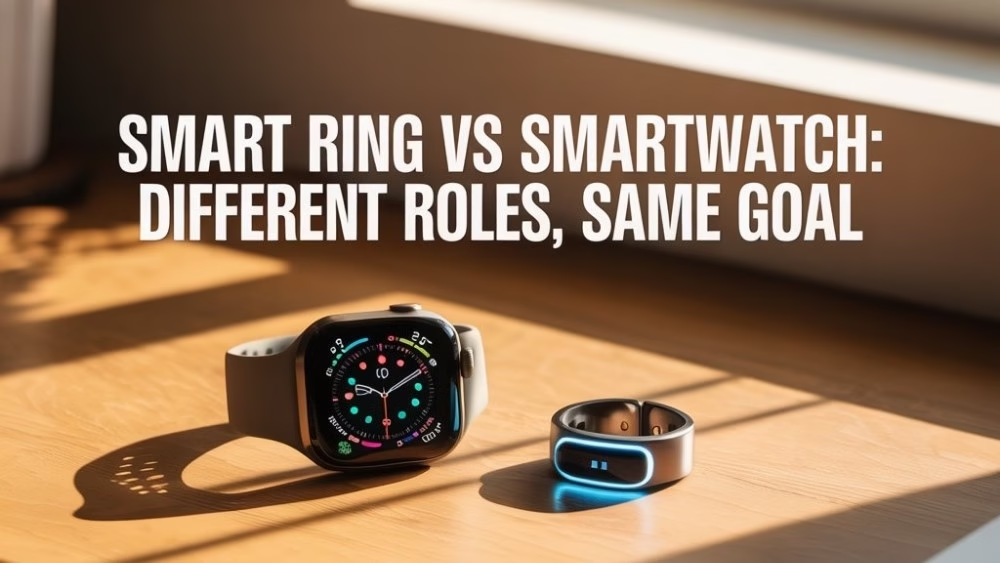
In reality, this isn’t a rivalry so much as two tools for different moments. A watch is a tiny screen; a ring is a quiet assistant.
- Watches excel at visuals and quick interactions. Maps, calls, and apps are still better on a screen. If you like tapping and swiping, the watch stays strong.
- Ring-based wearables win on comfort and subtlety. They keep running even when you forget about them. That equals better long-term consistency.
- Both can live together. Let the finger-worn device gather core metrics. Let the watch surface information when you want it.
- Battery expectations differ. Many rings last several days. Fewer charges mean fewer chances to forget.
If you’re into intuitive home tech, the Voice-Activated Lighting guide explains how small upgrades can transform daily comfort and convenience.
Who Gets the Most from a Ring-Based Wearable
In fact, this category fits more people than you’d think. The appeal is practical rather than flashy.
- Health-minded users who value sleep and recovery. Overnight comfort keeps data honest. Honest data makes better plans.
- Professionals who prefer minimal interruptions. A quick buzz is all you need in a presentation. Your phone can stay invisible.
- Travelers and commuters who like tap-to-pay convenience. Lighter pockets, fewer stops. Contactless access often feels futuristic.
- Style fans who want function to hide inside form. The look stays clean. The capability stays close.
For lifestyle-focused innovations that blend design and technology, you can explore more features in the E-Lifestyle category. It’s full of practical ideas for modern living.
Budget Picks Without Compromise
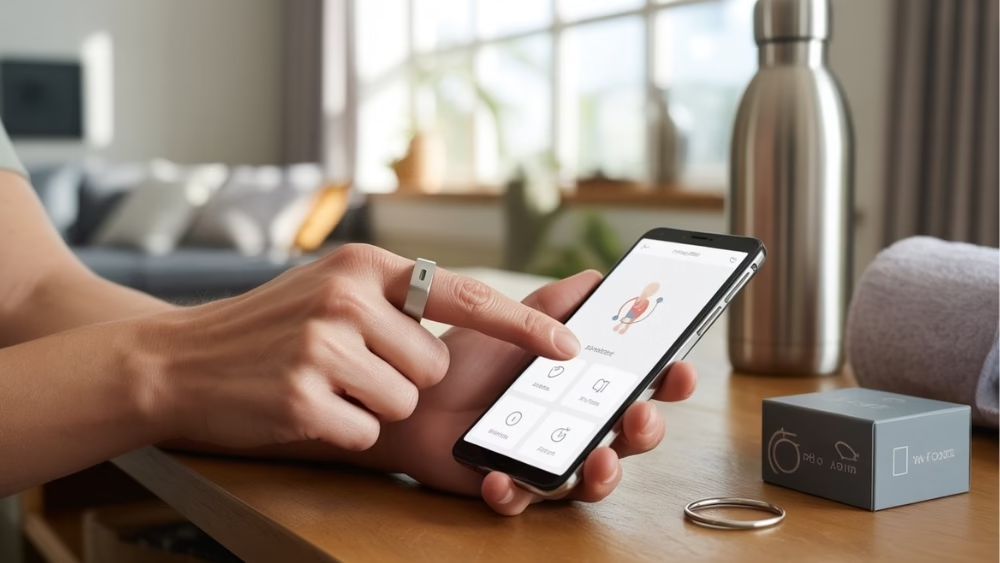
Fortunately, there is a healthy middle ground between ultra-premium and too basic. The cost of a smart ring can be reasonable while still delivering quality.
- Focus on the essentials first. Sleep, heart rate, and battery life matter most daily. Fancy features can come later.
- Check water resistance for workouts. Light rain and sweat are common-sense needs. IP ratings spell out those limits clearly.
- Make sure the app feels intuitive on your phone. If you won’t open it, you won’t use it. Simplicity keeps the routine alive.
- Verify size kits and exchange policies. Fit is everything for accuracy and comfort. A painless swap process saves hassle.
For a broader sense of where the category is headed, IDC’s outlook predicts adoption will multiply as hardware matures.
Honest Limitations to Know First
However, no tool is perfect. Knowing the quirks helps you buy confidently.
- Small shells limit battery options. Expect several days, not weeks. Charging cradles make the routine easy.
- Some apps place top analytics behind subscriptions. Read the fine print to avoid surprise costs. For example, trials help you judge value before you commit to a subscription.
- Sizing matters for signal quality. A loose ring can skew readings. Take fitting seriously for the best results.
- Regional support varies. Confirm warranty coverage before importing. Local after-sales service can be a time saver.
Market growth numbers from Persistence Market Research suggest brands will keep improving these pain points as competition grows.
How This Compact Gadget Is Changing Wearables

Smaller, quieter, and more intentional—that’s where personal tech is going. The ring format fits the moment perfectly.
- It unites AI, wellness, and design. Intelligence hides in plain sight. You benefit without babysitting a screen.
- It encourages sustainability through lower power use. Fewer charges add up over months. Subtle efficiencies are still wins.
- It integrates with homes and cars more every quarter. Doors, lights, and access are heading toward single-gesture control that feels natural and fast.
- It mirrors a cultural shift toward calmer tech. People want signal, not noise. This form factor respects that.
Want to see how tiny gadgets can have big personalities? The EMO Desktop Robot write-up proves it perfectly.
What’s Next, Practically Speaking
Looking ahead, expect better sensors, richer insights, and friendlier pricing as the category scales.
- Health metrics will expand beyond basics. Non-invasive glucose and ECG are active research areas. When ready, they will change their daily habits.
- Charging will get easier. Docks and travel cases are improving steadily. Less friction means better consistency.
- Fashion collabs will grow. Design houses love wearable stories. The result is choice without compromise.
- Wider availability narrows the price gap. More regions get official support that stabilizes the total ownership cost.
For a reality check on current leaders and everyday value, Wired remains a handy reference.
Conclusion
This year’s ring-based wearables prove that useful tech can also be calm and beautiful. The smart ring trend 2025 focuses on what matters most, like sleep, recovery, and gentle cues, while staying out of the way. If you wanted a wellness tool that respects your attention, this is it.
Once you’ve shortlisted a few models, explore their updates closely. The next generation of these finger-worn devices is already in development, promising smarter sensors and even sleeker designs. With innovation moving this fast, the next accessory on your finger might do far more than track steps — it could redefine how you live, work, and stay connected.
FAQs
What exactly is a ring-based wearable, and how is it different?
It’s a finger-worn device that tracks wellness, syncs with your phone, and sends subtle alerts. Unlike wrist gadgets, it’s light, discreet, and comfortable for overnight wear — ensuring consistent data and better long-term insights.
How accurate are the sensors on these devices?
Accuracy depends on build quality and fit, but most models track heart rate, HRV, temperature, and sleep reliably. Since the finger sits closer to the arteries, readings stay steady across multiple days.
What is the typical price of a smart ring in 2025?
Prices start near USD 150, mid-range around USD 250–350, and premium versions above USD 400. The cost of a smart ring reflects materials, sensors, and app features, which vary by brand and region.
Where should I buy to avoid counterfeits?
Buy from official brand sites or verified sellers, like Amazon and Best Buy. Check return policies, warranty coverage, and ensure firmware updates are supported to protect accuracy and device life.
How long does the battery usually last?
Most batteries last five to seven days per charge, depending on usage and vibration alerts. Compact charging cradles make recharging simple and quick.
Are they water-resistant?
Yes, most handle sweat, rain, or splashes. Check each model’s IP rating and avoid deep water or high heat to preserve sensors and durability.
Will payments work everywhere?
Tap-to-pay depends on NFC and regional bank support. Many users can add cards in the app for secure transactions, but availability still varies by country.
How effective is smart ring health tracking compared to other wearables?
Modern smart ring health tracking uses precise sensors for heart rate, sleep, and stress data. Positioned close to the arteries, it delivers accuracy that rivals leading wearables in the wearable tech trends 2025 landscape.

